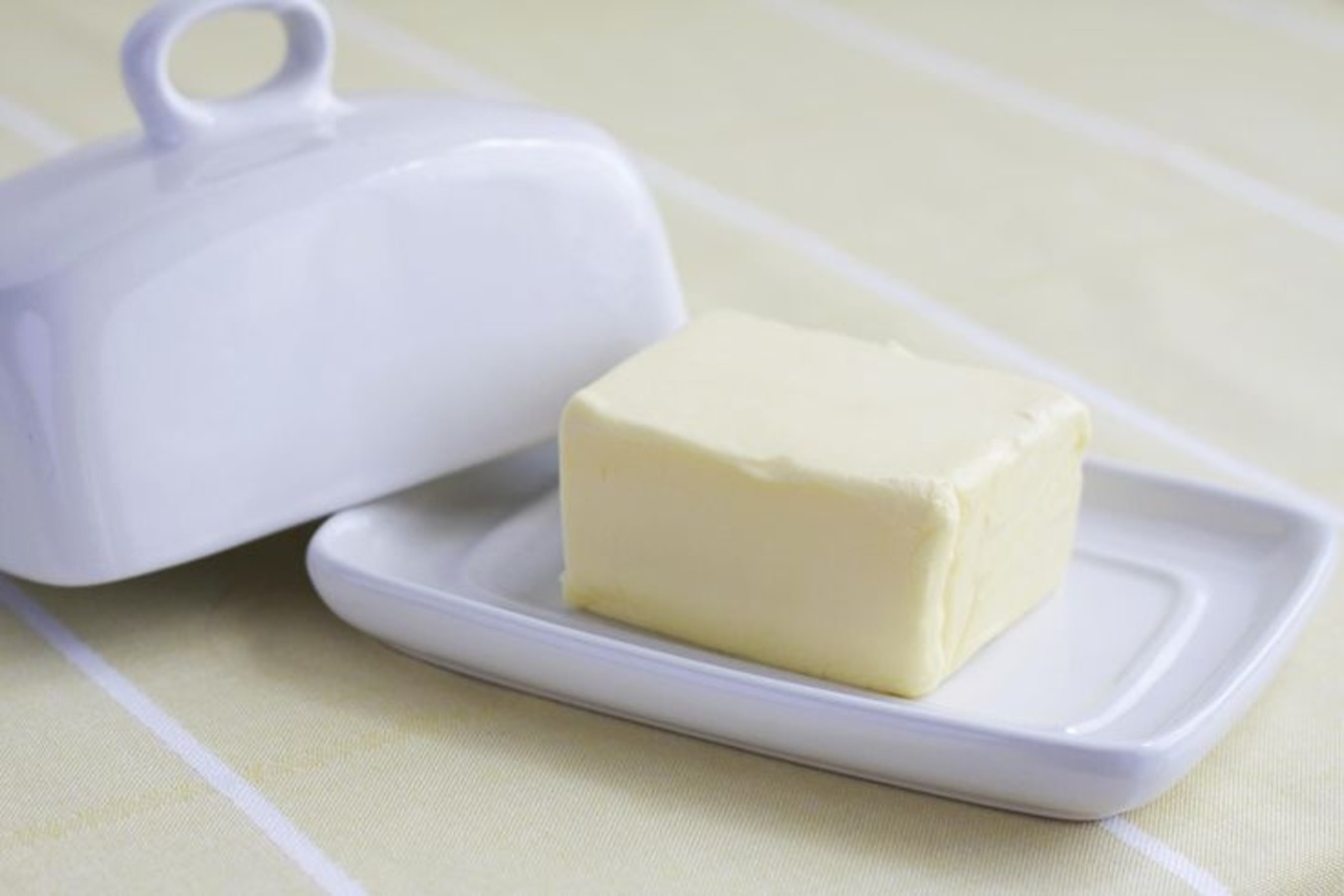
Margarine is a commonly used alternative to butter, known for its smooth texture and versatility in cooking and baking. While many people enjoy margarine on a regular basis, there is still some confusion surrounding this popular spread. In this article, we will explore 16 fascinating facts about margarine that will shed light on its history, production, nutritional value, and more. From its humble beginnings as a butter substitute to the different types available in the market today, we will uncover the truth behind margarine and help you make informed decisions when it comes to incorporating it into your diet. So, get ready to delve into the world of margarine as we unveil its secrets and debunk common misconceptions about this beloved spread.
Key Takeaways:
- Margarine, invented in the 19th century, is made from vegetable oils and often fortified with vitamins. It has less saturated fat than butter and comes in various forms for different cooking needs.
- Margarine, with a longer shelf life than butter, can be used as a substitute in vegan and lactose-free diets. It can also be flavored and used in baking for flaky pastries.
Margarine was invented in the 19th century.
Margarine was created in the 1860s as a less expensive alternative to butter, especially for those who couldn’t afford dairy products.
Margarine is made from vegetable oils.
Unlike butter, which is derived from animal fats, margarine is primarily made from vegetable oils like soybean, canola, or sunflower oil.
Margarine is often fortified with vitamins.
To enhance its nutritional value, margarine is frequently enriched with essential vitamins such as vitamin A, vitamin D, and vitamin E.
Margarine contains less saturated fat than butter.
Due to its vegetable oil base, margarine generally has a lower saturated fat content compared to butter, making it a healthier option for some individuals.
Margarine is available in various forms.
Whether it’s in a tub, stick, or spreadable form, margarine comes in different formats to suit different cooking and spreading preferences.
Margarine often undergoes hydrogenation.
Hydrogenation is a process performed on vegetable oil to solidify it, giving margarine a more spreadable and stable texture.
Margarine can be used as a butter substitute in baking.
Many recipes can be adapted to use margarine instead of butter, making it a versatile ingredient in the kitchen.
Margarine has a longer shelf life than butter.
Due to its hydrogenation process, margarine has a longer shelf life compared to butter, making it a convenient choice for many.
Margarine can be used to make flaky pastries.
With its solid texture, margarine can be used in pastry recipes to create layers and achieve a flaky, buttery taste.
Margarine is often used as a butter substitute in vegan and lactose-free diets.
For individuals following a vegan or lactose-free diet, margarine is a common choice to replace butter in cooking and baking.
Margarine can be flavored with various ingredients.
To add a unique taste, margarine can be flavored with herbs, garlic, spices, or even infused with oils.
Margarine has different melting points depending on its composition.
The melting point of margarine varies based on the oils used, which can affect its performance in different cooking methods.
Margarine was initially created to support the French military.
In the 1860s, Napoleon III sought a low-cost alternative to butter to feed his troops, leading to the invention of margarine.
Margarine gained popularity during World War II.
Due to rationing and limited access to butter, margarine became a common staple during the war, especially in countries like the United Kingdom.
Margarine is used in the production of some food products.
Margarine is not only consumed directly but is also utilized in the production of items such as cookies, cakes, and processed snacks.
Margarine can have different fat contents.
Depending on the brand and type, margarine can have varying fat percentages, allowing individuals to choose options that align with their dietary needs.
Conclusion
After exploring these 16 facts about margarine, it becomes clear that there is much more to this butter substitute than meets the eye. From its origins as a cheaper alternative to butter to its diverse forms and nutritional profiles, margarine has come a long way.
While it may have received a bad rap in the past due to its high trans fat content, modern-day margarines have made significant improvements, offering healthier options with reduced trans fats and saturated fats.
Whether you choose to include margarine in your diet or opt for other alternatives, it’s essential to make informed decisions based on your health needs and preferences. As with any food, moderation is key.
With the knowledge gained from these facts, you can now approach margarine with a deeper understanding of its history, production, and nutritional profile.
FAQs
Q: Is margarine a healthier alternative to butter?
A: Margarine can be a healthier alternative to butter, depending on the specific type you choose. Look for margarines that are low in trans fats and saturated fats and made with healthier oils.
Q: Can margarine be used in baking?
A: Yes, margarine can be used in baking instead of butter. Make sure to use a suitable type of margarine that is specifically labeled for baking purposes to get the best results.
Q: Can margarine be used as a spread?
A: Absolutely! Margarine is commonly used as a spread on toast, bread, and other baked goods, just like butter.
Q: Does margarine have any nutritional benefits?
A: Margarine can be a good source of healthy fats, including polyunsaturated and monounsaturated fats. Additionally, some margarines are fortified with vitamins and essential nutrients.
Q: Is it true that margarine is a plant-based product?
A: Yes, margarine is typically made from vegetable oils, making it a plant-based alternative to butter.
Q: Can people with lactose intolerance consume margarine?
A: Yes, margarine is lactose-free and can be a suitable option for individuals with lactose intolerance.
Margarine's fascinating history, composition, and culinary uses make this versatile spread an intriguing topic. Dive deeper into margarine's nutritional profile and health benefits, or explore specific brands like Country Crock and Smart Balance for more detailed information. Whether you're a health-conscious consumer, a curious foodie, or simply looking to expand your knowledge, these articles offer valuable insights into the world of margarine.
Was this page helpful?
Our commitment to delivering trustworthy and engaging content is at the heart of what we do. Each fact on our site is contributed by real users like you, bringing a wealth of diverse insights and information. To ensure the highest standards of accuracy and reliability, our dedicated editors meticulously review each submission. This process guarantees that the facts we share are not only fascinating but also credible. Trust in our commitment to quality and authenticity as you explore and learn with us.


